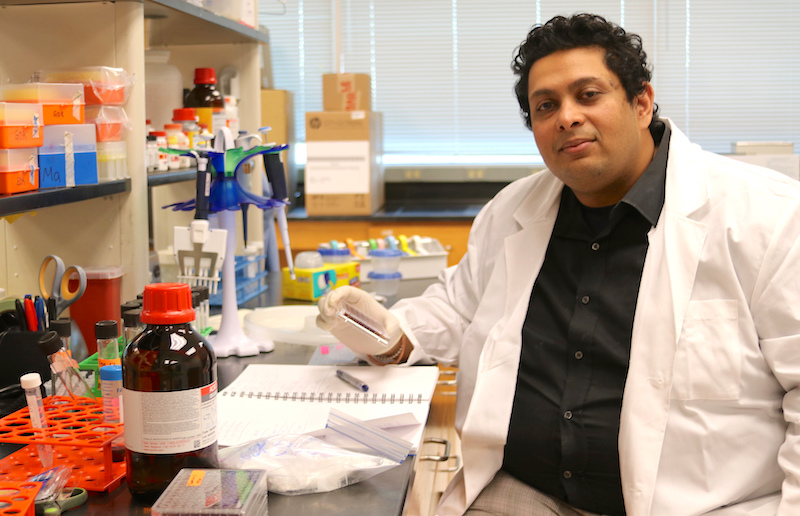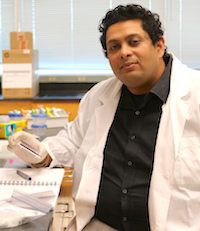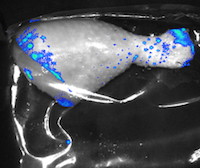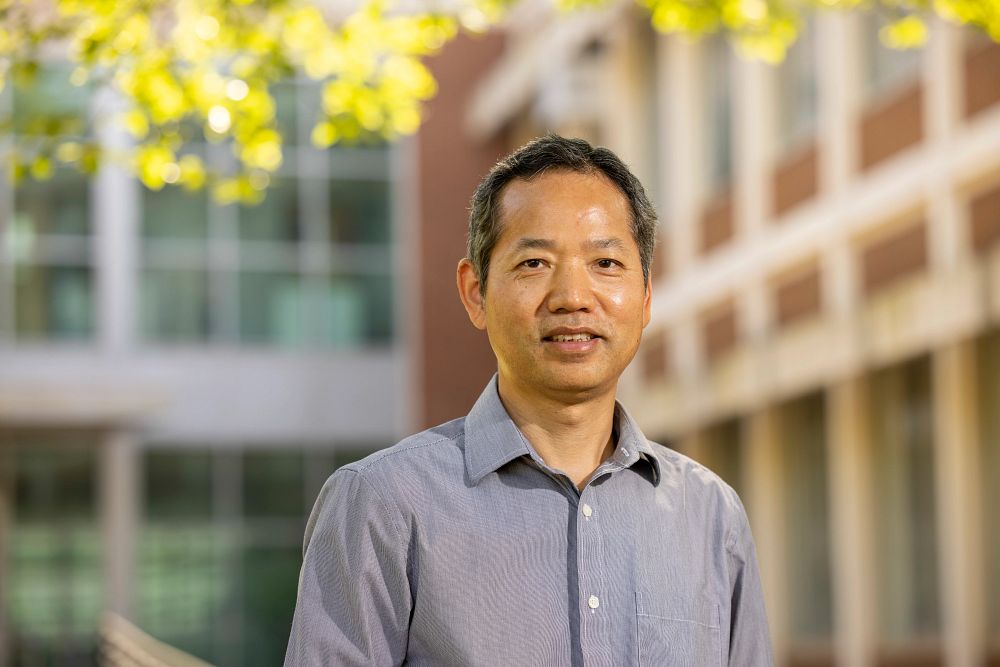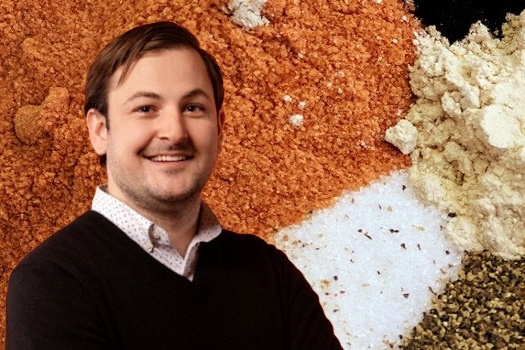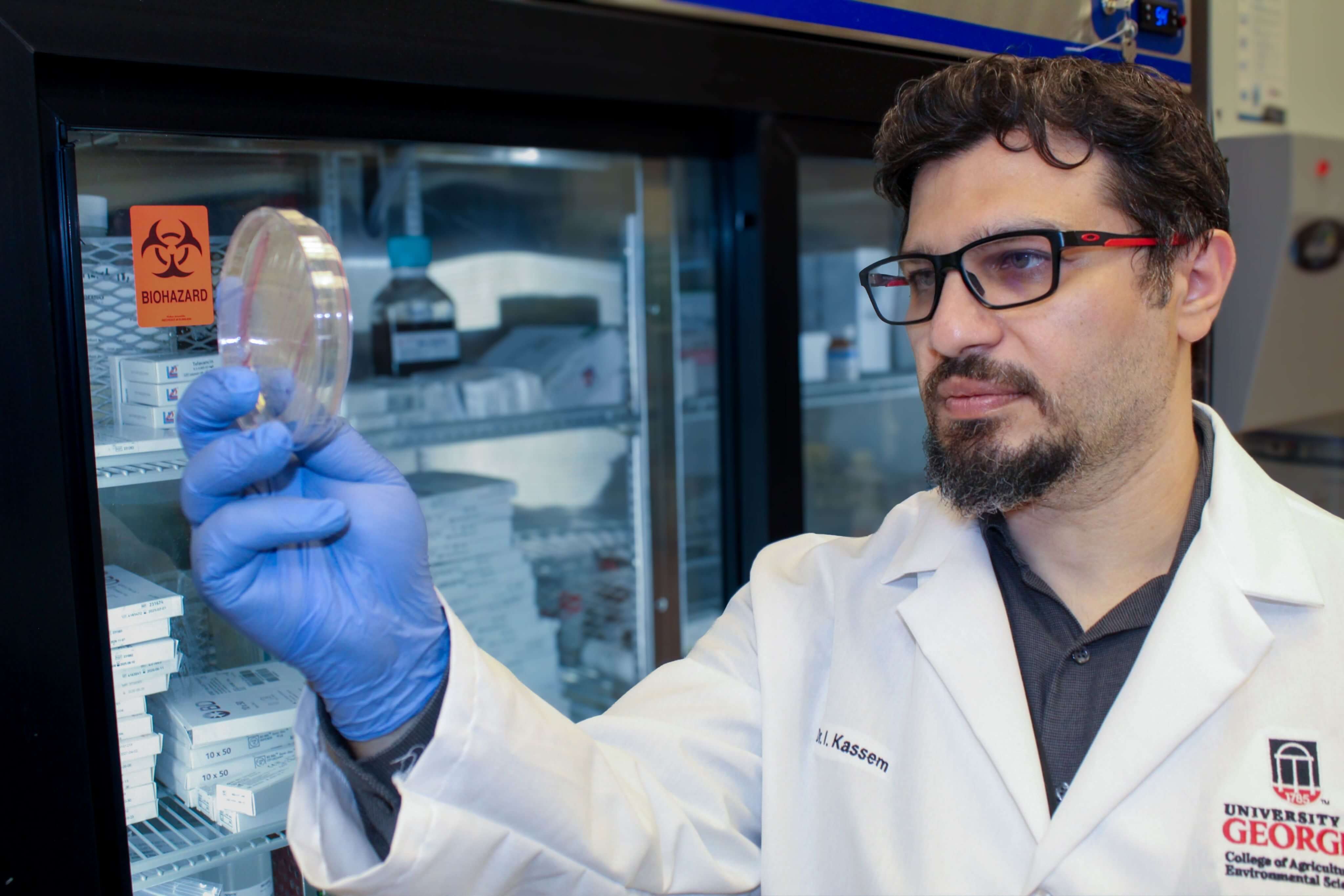When humans get sick, our immune systems kick into high gear. To help guard against disease, people are increasingly turning to antimicrobial agents — from soaps to wipes to hand sanitizers — to help kill germs. However, scientists have found that some strains of Salmonella pathogens have developed strategies to evade damage.
In work published in the January 2019 issue of the Journal of Applied and Environmental Microbiology, University of Georgia bacteriologist Govind Dev Kumar found that, when stressed, Salmonella cells formed filaments, or giant cells.
These uncharacteristically long cells of Salmonella form in response to antimicrobials. Regular bacterial cells of Salmonella are usually 2 to 4 microns long (a micron is a millionth of a meter). These filament cells can be hundreds of times longer.
“At first, we thought we were seeing a strand of fabric that somehow got under the microscope,” said Dev Kumar of the long strands.
To understand how these filaments helped Salmonella survive in the presence of antimicrobials, Dev Kumar, and his colleagues, Dumitru Macarisin of the Food and Drug Administration (FDA) Center for Food Safety and Applied Nutrition in College Park, Maryland, and Shirley Milcallef of the Center for Food Safety and Security Systems at the University of Maryland, used microscopy and fluorescence.
“We magnify the cells many times and make them glow like a firefly,” said Dev Kumar, who joined the faculty at the Center for Food Safety (CFS) on the UGA Griffin campus in Griffin, Georgia, in September.
The team specifically studied Salmonella Newport, a strain that can be traced back to the pathogen outbreaks in fresh tomatoes a few years ago, as well as outbreaks in beef products, he said.
“Salmonella Newport is very diverse; it’s found in lots of environments in water, sediments and food,” Kumar said.
The researchers found that when exposed to pelargonic acid — a compound naturally found in several fruit and vegetables — Salmonella Newport readily formed filaments to protect itself. The scientists realized that the filaments were made up of many tiny cells attached to each other, resulting in a “strength in numbers” strategy against antimicrobials.
For the next step in this research, Dev Kumar will work with UGA CFS scientist Kevin Mis Solval to try to figure out why some sanitizers fail to kill harmful bacteria like Salmonella.
“I have a full understanding of how sanitizers work,” Dev Kumar said. “Now I have to look for loopholes and develop better microbials.”
In recent foodborne illness outbreaks traced back to fresh tomatoes, researchers found the acid in the tomatoes helped protect the pathogen, Kumar said. He and Mis Sloval plan to use similar fatty acids to deactivate pathogens.
A native of India, Kumar says infectious diseases were a regular part of his life as a child. This led him to choose a career finding ways to “reduce the burden of foodborne disease,” said Kumar, who earned both his master’s degree and doctoral degree in food science at Virginia Tech.
He completed his postdoctoral work at the University of Arizona where he focused his work on leafy green vegetables as vehicles for Salmonella. Next, he joined the University of Maryland where he studied the effect of sanitizers on foodborne pathogens. He conducted the Salmonella filaments study while he was a postdoctoral associate at the University of Maryland Department of Plant Science.
To read the entire publication, “Salmonella enterica Filamentation Induced by Pelargonic Acid Is a Transient Morphotype,” go to https://aem.asm.org/content/85/2/e02191-18.

